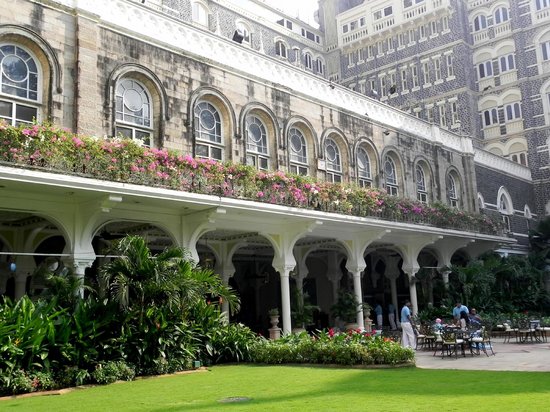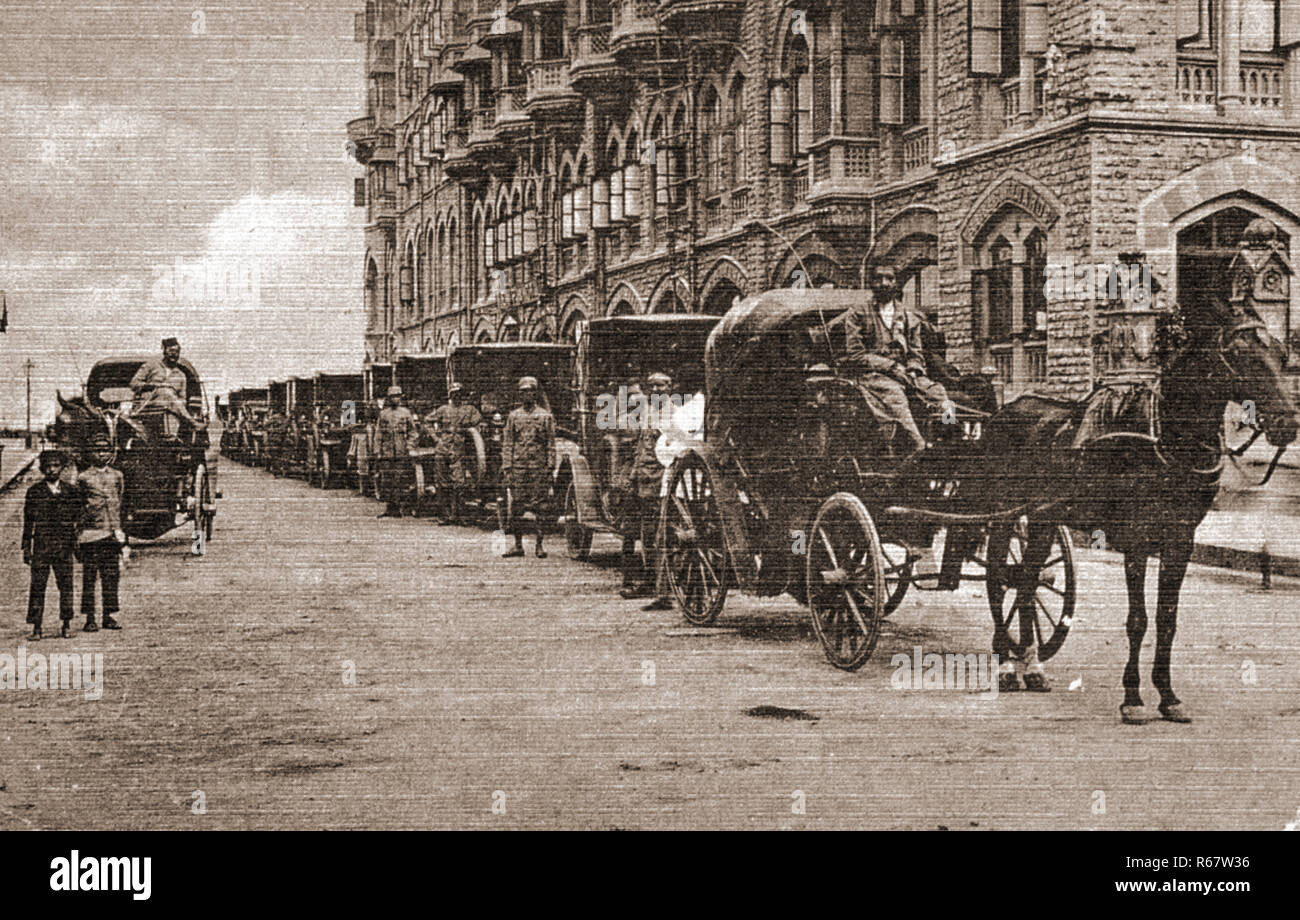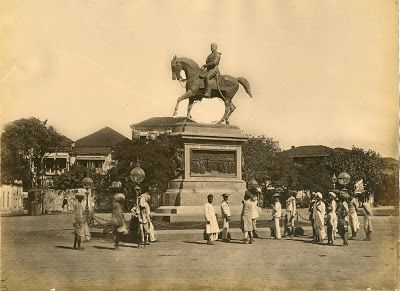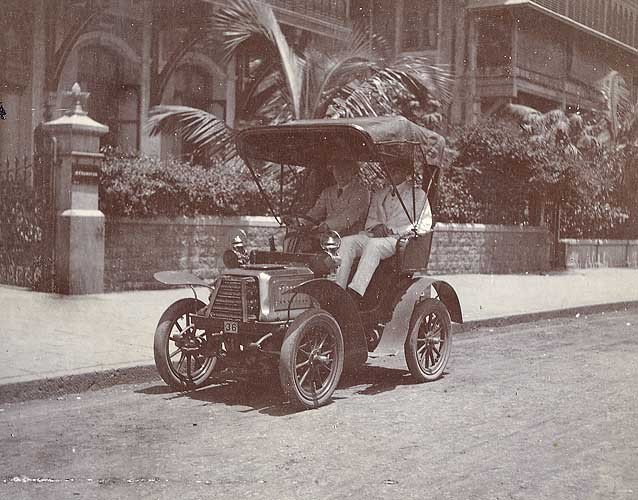[PART-1Ahttp://oldphotosbombay.blogspot.com/2011/09/1a-bombaymumbai-taxi-1850-to-2001-also_3982.html
[PART-1B
[PART-2]http://oldphotosbombay.blogspot.com/2011/04/glimpses-of-old-bombay-and-western.html
[PART-3]http://oldphotosbombay.blogspot.com/2011/04/glimpses-of-old-bombay-and-western_02.html
[PART-4]http://oldphotosbombay.blogspot.com/2011/04/4glimpses-of-old-bombay-and-western.html
[PART-5]http://oldphotosbombay.blogspot.com/2011/04/dedicated-to-first-city-mumbai-bombay.html
[PART-6]http://oldphotosbombay.blogspot.com/2011/04/6.html
[PART-7]http://oldphotosbombay.blogspot.com/2011/04/6-glimpses-of-old-bombay-and-western.html
[PART-8]http://oldphotosbombay.blogspot.com/2011/04/7.html
[PART-9]http://oldphotosbombay.blogspot.com/2011/04/first-anglo-maratha-war-was-first-of.html
[PART 10]http://oldphotosbombay.blogspot.com/2011/06/bombay-history-of-cinema-1896-and.html
[part11]http://oldphotosbombay.blogspot.com/2011/06/indian-modes-of-irrigation1874-elephant.html
[continuation from 1A]

Narottam Morarjee was born on 2 April 1877 at Porbandar. His father Seth Morarjee Goculdas was a pioneering textile magnate.
ndian Muslim businessman. He wasknighted during the Prince and Princess of Wales's Indian tour of 1905[1] and created a baronet in 1910[2] and further granted lands to support that dignity by the Currimbhoy Ebrahim Baronetcy Act 1913[3] following the precedent set by the Cowasji Jehangir Baronetcy Act.
![[Malabar Hill, Bombay.]](https://www.mq.edu.au/macquarie-archive/lema/gallery/wales/malabarhill_tn.jpg) View from Malabar Hill | ![[Love Grove, Bombay.]](https://www.mq.edu.au/macquarie-archive/lema/gallery/wales/lovegrove_tn.jpg) View of Breach from Love Grove. |
![[Breach Causeway, Bombay.]](https://www.mq.edu.au/macquarie-archive/lema/gallery/wales/breachcauseway_tn.jpg) View of Breach Causeway |
![[View From Belmont.]](https://www.mq.edu.au/macquarie-archive/lema/gallery/wales/belmont1_tn.jpg) View From Belmont. |
![[View From Belmont.]](https://www.mq.edu.au/macquarie-archive/lema/gallery/wales/belmont2_tn.jpg) View From Belmont. |
![[View from Sion Fort.]](https://www.mq.edu.au/macquarie-archive/lema/gallery/wales/sionfort1_tn.jpg) View from Sion Fort. |
![[View From the Island of Elephanta.]](https://www.mq.edu.au/macquarie-archive/lema/gallery/wales/sionfort2_tn.jpg) View from Sion Fort. |
![[View From the Island of Elephanta.]](https://www.mq.edu.au/macquarie-archive/lema/gallery/wales/elephanta_tn.jpg) View from Island of Elephanta. |
| 1 | 2 | 3 | 4 | | |
View of the Breach Causeway at Bombay.
THE GREAT BREACH
PYDHONIE AND UMARKHADI
THE HORNBY VELLARD
Arrival Of Indian & Australian Mails At Alexandria EgypT on the way to Bombay 1853
Australian mails. Egypt 1853 Stock ...
| PIGEON WITH LETTER CONTAINER ON BACK |
| POst men running with postal articles 1850's picture[ called dawk wallah by english men ;Scinde Dawk was a very old postal system of runners that served the Sindh, The term also refers to the first postage stamps in india the forerunners of the adhesive stamps used throughout India] Darius extended the network of roads across the Persian empire, to enable both troops and information to move with startling speed. At the centre of the system is the royal road from Susa to Sardis, a distance of some 2000 miles (3200 km). At intervals of a day's ride there are posting stations, where new men and fresh horses will be available at any moment to carry a document on through the next day's journey.By this method a message can travel the full distance of the road in ten days, at a speed of about 200 miles a day.other methods of communications in the past were [1]'message whistling' of canary islands[2] 'tom tom' messages by drum beats,[3]fire signal by south american indians[4] smoke signals by north american indians 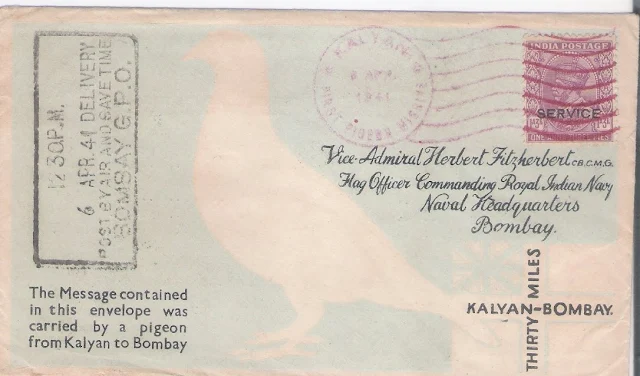 history of the british empire - History Worldwww.historyworld.net › wrldhis › plaintexthistories England
makes tentative first steps towards establishing a presence beyond the
ocean in the same decade as Spain and Portugal, the 1490s. In 1497 Henry
VII ... |
| India postage 1930 - SHOWS THE 'Dak runne | r' |
Pigeon Post during 1st world war
 |
| ICE HOUSE AND GREAT WESTERN HOTEL |
late four from J M Gonsalves' 'Views at Bombay'. During the 1820s, institutions for currency production were constructed in various parts of India including Bombay, Benares and Calcutta. These imposing Doric structures can be seen to represent the feeling of growing political power of the English. The Bombay Mint was constructed between 1821and 1829 on the site of the Fort rubbish dump. The architect was John Hawkins of the Bombay Engineers. The building on the right of the picture is the Town Hall.
icture of six 'Native Judges and Officers of the Court of the Recorder, at Bombay', at the beginning of F W Blagdon's book, 'A Brief History of Ancient and Modern India'. According to Blagdon, these drawings 'were taken from life in 1758' and are labelled respectively as holding the following positions. '1. Judge of the Hindoo Law, Antoba Crustnagee Pundit. 2. Interpreter, Rhowangee Sewagee. 3. Hindoo Officer, Lellather Chatta Bhutt. 4. Judge of the Mohomedan Law, Cajee Husson. 5. Officer to the Mooremen, Mahmoud Ackram of the Codjee order or priesthood of the cast of Moormens. 6. Haveldar, or summoning Officer, Mahmound Ismael'.

Engraving of the Grant Medical College showing part of Sir Jamsetjee Jeejeebhoy's Hospital in Bombay by G. R. Sargent from his own drawing and published by him in London in 1844. The engraving was printed by M & N Hanhart. The Grant Medical College and the Jamsetjee Jeejeebhoy Hospital were built in the 1840s and funded jointly by Jamsetjee Jeejeebhoy and the East India Company. Jamsetjee Jeejeebhoy (1783-1859) was a Parsi merchant and eminent philanthropist. The Grant Medical College is shown in the foreground of this view. It was named after Sir Robert Grant, the Governor of Bombay between 1835 and 1838.

This is an old 1872 print of the floating dock in British Era Bombay, now Mumbai. The clip is from an 1872 French newspaper, translated it reads “English India – Bombay Floating Dock.” It was also called hydraulic lift graving dock on which repair work of primarily troopships took place. This dock was based in Hog island (Nhave) near Bombay harbour in the 19th century.
Read more- Hog Island Hydraulic Lift.
Photograph of a group of pupils from the Juggunath Shankarset Girls' School at Bombay in Maharashtra from the Archaeological Survey of India Collections: India Office Series (Volume 46), taken by an unknown photographer in c. 1873. This image of pupils posed on the verandah was probably shown at the Vienna Exhibition of that year. On the photograph, there is a letterpress caption, above the main caption, which reads "Student's Literary & Scientific Society, founded 1848. President Dr Bhau Daji." S.M. Edwardes wrote in The Gazetteer of Bombay City and Island (3 vols, Bombay (1909-10), "...The Students' Literary and Scientific Society, which supported nine vernacular free schools for girls, attended by 654 pupils, of whom 136 were Marathi-speaking Hindus, 120 Gujarati Hindus and 398 Parsis...The formation of this society was promoted by Professor Patton of the Elphinstone College in 1848. It was intended by the student and assistant teachers of the Elphinstone Institution to be a mutual improvement society and to aid the dissemination of knowledge by means of vernacular lectures and the publication of cheap periodicals in the vernacular languages..
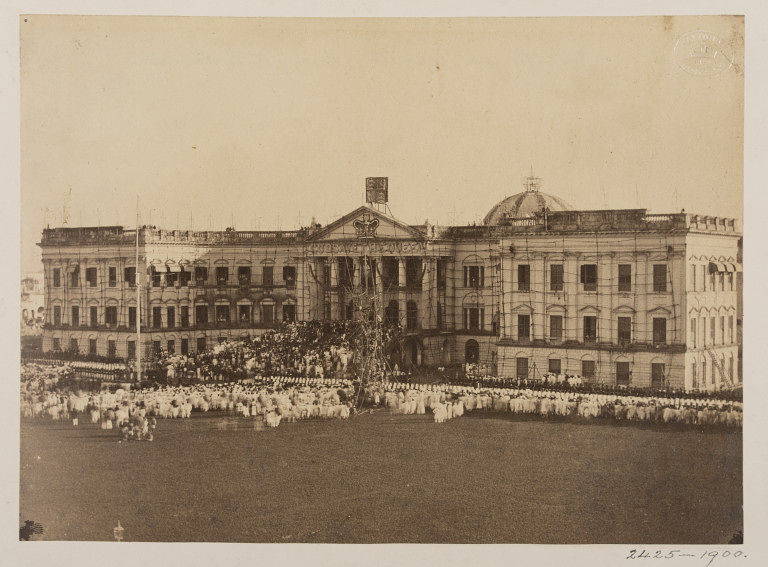
- Ceremony witnessing the handing of the British Crown from the East India Company to Queen Victor

| INDIANS CARRYING,ON A PALANQUIN- A WHITE WOMAN WITH A WHITE UMBRELLA IN SIMLA MALL(MAIN STREET) 19 TH CENTURY PHOTO.[INDIANS WERE NOT ALLOWED IN THE MALL AREA BY BRITISH RULERS IN THE BEGINNING BUT LATER ON ALLOWED] |
{Palm leaves were first cut from the trees before they could dry up and become brittle. These were then boiled in water to the required temperature in order to render them soft. The softened leaves were then dried in the shade or mild sunshine. The desired portion was taken from mid-leaf, pressed and then polished. These were then cut into the required size and made into rolls of paper.Tālapatras or palm leaves of slightly yellow hew, eight angulas (inches) long, which were more brittle and hence cheaper, were given to students for copy work. The leaves of shritāla were a slight red in color and were 24 to 32 angulas in length. These were quite thin, soft and malleable. Such leaves were supplied to poets, scholars and writers.
There were professional palm-leaf paper-makers (ôleya kāyakadavaru) 2, who prepared ready-to-write ôles or palm-leaves, and supplied them to mathas , basadis, temple schools and private individuals. These were sold in rolls ( kāttu) in village shanties as well3. Specially prepared preservative oil was applied to palm-leaf rolls before tying them into a book. Turmeric was often used to make the rolls colorful. Holes were made in the margins of these leaves, through which silken thread was passed and the leaves were carefully tied, and finally the book was ready
Palm-leaf Texts
 Palm leaf manuscripts ...idc.iitb.ac.in
Palm leaf manuscripts ...idc.iitb.ac.in
 palm leaf(ola) fiscal documents ...pazhayathu.blogspot.com
palm leaf(ola) fiscal documents ...pazhayathu.blogspot.com Narayam - Wikipediaen.wikipedia.org
Narayam - Wikipediaen.wikipedia.org
 Indian Letter - Type Design | The World ...designindia.net
Indian Letter - Type Design | The World ...designindia.net
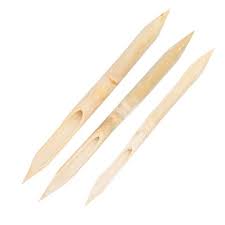 ProductBamboo Reed Pens – Jack Richeson & Co.products.richesonart.com · In stock
ProductBamboo Reed Pens – Jack Richeson & Co.products.richesonart.com · In stock
Devanagiri Manuscripts - 9th - 17th Century:
Palm-leaf Texts
pazhayathu.blogspot.com en.wikipedia.org |
designindia.net |
| Devanagiri Manuscripts - 9th - 17th Century: |
Class with mistress in a mofussil or up-country girls' school, Bombay
Group of Parsee pupils and masters in class of the Elphinstone High
School, Bombay --
Photograph of pupils in a class of the Elphinstone High School at Bombay in Maharashtra from the Archaeological Survey of India Collections: India Office Series (Volume 46), taken by an unknown photographer in c. 1873. This image of pupils gathered around a table conducting an experiment, possibly in physics, was shown at the Vienna Exhibition of the same year. The school shown here is named after Mountstuart Elphinstone who helped to establish the educational structure of the Bombay area. The Imperial Gazetteer of India states, "There are three classes of secondary schools - the vernacular and English middle schools, and the high schools...The English secondary school stage is divided into middle and high school sections, which really form portions of the same course...the English school education should ordinarily be completed by the time the pupil attained the age of sixteen...In English secondary schools the main course has hitherto led up to the matriculation or entrance examination of one or other of the Universities. There are other courses of a more practical character leading up to different examinations...A purely literary education has been more popular among both parents and students, as being in itself more attractive to them and as affording a better opening for remunerative employment. The matriculation has generally been accepted as a qualifying test by Government and private employers as well as by the Universities, and has been regarded as the common goal of the school career."
Group of Girl Students from the Juggunath Shankarset Girls' School at Bombay (Mumbai) in Maharashtra - 1873 - Old Indian Photos
Group of Girl Students of the Bhagwandas Purshottum Girls' School, Bombay ( Mumbai) - 1873 - Old Indian Photos
agannath Shankar Sheth Municipal School in Grant Road,Mumbai - Best Public Schools in Mumbai -
A girls' school operating in Jagannath Shankar Seth's residential complex
Jagannath Shankar Shet (10 October 1800 – 31 July 1865), was a notable Indian Philanthropist and a revolutionary Educationalist. He was born in 1800 in the wealthy Murkute family of Goldsmiths of the Daivadnya Caste in Mumbai (Bombay). He was one of the founders of Elphinstone College, and Indian Railway Association that became part of the Great Indian Peninsula Railway. He was the first Indian member to be nominated to the Legislative Council of Bombay under the XXTY 26 Act of 1861, a member of the Bombay Board of Education, and also the first Indian member of the famous Asiatic Society of Bombay.
| Coloured lithograph of the Government House at Parel in Bombay by Day & Son after Sir Harry Francis Colville Darrell (1814-1853) from his 'China, India and the Cape' published in London in 1852. Parel, originally an island, is located in the northern part of Bombay. The building shown in this view was built by the Jesuits[ as a church] under Portuguese rule in the 16th and 17th centuries.Later It was used as a country retreat for the English Governor of Bombay from 1719. In 1829, the building officially became the Government House. However, in the 1880s the Government House was relocated to Malabar Point. |
STORY OF ICE AND ICECREAMS IN BOMBAY
| Bombay's first ice house(ice storage house where ice unloaded from ship was stored) next to the harbour ;seen in the photo as a rounded white dome house;next to the church--1860's photo |
How ice shipped all the way from America became a luxury item in colonial India
In the 19th century, Boston businessman Frederic Tudor started shipping ice from the lakes of New England to the subcontinent.
For almost four decades, 1830 to the 1870, ice in the presidency towns of British India was a luxury item, imported from New England in the US North East. An essay by David Dickason, The 19th century Indo-American Ice Trade, which appeared in the Modern Asian Studies journal in 1991 offers much insight into the subject.
As early as 400 BC, Persian engineers had worked out a technique: ice brought down from mountains was stored in large, thick-walled containers that were placed underground and naturally cooled, according to the essay. The Mughals used Himalayan ice but the British found it an expensive proposition, maintaining ice fields that needed land and was labour intensive, Dickason tells us. There was for long the Hooghly ice, made by freezing water in shallow pits, but this came out quite gritty and slushy and was never really potable.
The ice king
In the 1830s, when Frederic Tudor built his fortunes on the ice trade, he came quite rightly to be called the “ice king”. We learn from a website on ice harvesting that he was born into a well-regarded Bostonian family but that his fortunes thus far had been poor; even his early investments in ice trade, namely shipping it to states in southern US and the Caribbean, had been only marginal successes. It was his desperation to avoid jail as a debtor when his investments in the coffee trade came to bust that made Tudor enter the risky venture of shipping ice to British India in Calcutta. His collaborators were Samuel Austin and William Rogers, the latter agreeing to become the ice agent for the trade partners in Calcutta.
American merchants had begun trading in India in 1778 when Lord Cornwallis extended the opportunities to them, but transporting and trading in ice was a different matter altogether. It was 1833 and voyage time across the Atlantic and Indian Oceans normally took four months. But in the last decade of the 19th century, innovations in the ice-harvesting business made such voyages a possibility.
Some of these were largely made by Nathaniel Jervis Wyeth, an associate of Tudor’s, but they would soon fall out. Wyeth invented a twin-bladed, horse-drawn ice-cutter, which meant that ice sheets could be cut up into big squares and then pried out with iron bars. This saved time and increased the productivity of men and horses. These giant cubes could also be packed tightly to quell melting. Wyeth experimented in methods of insulating the ice on board ships, developing for instance, double-walled storehouses insulated with saw dust or tan, a product of tanneries, and accessible from the roof, to reduce the melting inevitable during a long voyage.
On May 12, 1833, the ship Tuscany, sailed from Boston for Calcutta, carrying 180 tonnes of ice. When it docked at Calcutta on September 6, the ship still had 100 tonnes of ice in its hold. People who gathered were amazed at the giant, icy cubes as they were unloaded and were described by a contemporary historian in his book, available online, on the development of the Massachusetts ice trade as “crystal blocks of Yankee coldness”. A local who reached forward to touch the ice, believed he had been “burnt”, considerably alarming the other onlookers. Another asked the captain of the ship whether ice grew on trees in America.
Thriving trade
The export of American ice to India soon flourished. Compared with the varieties at that time, this kind of ice was seen as pristine. Massachusetts, located in the high latitudes and on the eastern shores of the Atlantic, produced substantial ice in its freshwater lakes. The purity of the ice cut from Wenham Lake, for instance, which was shipped to London, impressed contemporary scientists such as Michael Faraday, who concluded that this ice melted slowly because it did not contain salt and air bubbles.
Over the next three decades, Calcutta and other presidency towns would become Tudor's most lucrative destinations, bringing him immense profits and making him a millionaire many times over.
Henry David Thoreau, who witnessed ice harvesting in Walden Pond, around which he lived for some years, wrote in 1854 that “the sweltering inhabitants of Charleston and New Orleans, of Madras, Bombay and Calcutta drink at my well.”
But of course, the ice from Walden served the elite Anglian society in the cities, and Tudor secured numerous favours and exemptions from the British. For instance, in the very first trip, William Rogers, the ice agent, secured a few exemptions: the ice was transported directly to warehouses without waiting for customs house formalities. Unloading the ice at night was permitted. In Bombay, ice ships received a favoured docking place and were made duty-free.
In the next few years, ice houses were built by raising funds within the community and then leased out to Tudor at a nominal rent. Tudor’s second voyage, which he financed on his own, could well have been a disaster, considering that 350 barrels of apples had all turned rotten, but the American Ice Committee in Calcutta and Governor General Lord Bentinck took a surprisingly lenient view. Tudor secured a monopoly on the trade in ice, and New England apples, as well as Spanish grapes and American butter, transported along with the ice also soon became expensive, coveted items of trade. Moreover, the ice house was expanded at public expense.
In Bombay, the firm of Jahangir Nuseervanji Wadia distributed the ice and Jamshetji Jeejeebhoy was the first to dispense ice creams at a dinner party. When several among the guests contracted a cold, the Gujarati Bombay Samachar opined that this was a worthy price to pay. In Calcutta, Dwarkanath Tagore expressed an interest to involve himself in ice shipping, but Tudor’s monopoly stayed for some decades more.
Between the years 1856 and 1882, 353,450 tonnes of ice had been shipped out all across South and East Asia and also Australia. Some of the ice was reserved for medical hospitals in the presidency towns, and in years of low supply, ice was rationed.
Decline and fall
Modern methods of ice-making soon made their advent around the 1870s. Tudor himself died in 1864 and the business passed onto other hands. With industrialisation and the construction of railway lines, there was also more pollution around Boston, which probably affected the quality of the ice. Thoreau noted that timber was cut down from around Walden Pond for the railway lines. Ice companies were formed in India too: the Bengal Ice Company was the first, set up in 1878. Ship-building became increasingly expensive. Ice plants increased in India following the spread of the railway line: 25 in 1904, 66 in 1925.
The Calcutta Ice house was razed to the ground in 1882, the Bombay one served as a warehouse till it was demolished in 1920s. The one in Chennai alone stands today; it was remodelled with circular verandahs and multiple windows to make a residence. Despite its poor ventilation, it did work for some time as a shelter for poor students. It is believed that Vivekananda during his travels through India stayed here for some time.
Besides Thoreau’s mention of ice cutters, this trade, strangely, finds little mention in the literature of the times. An exception is Rudyard Kipling. In his story, ‘The Undertakers’ in the Second Jungle Book, he mentions it in a conversation that takes place between a bird, a crocodile and a jackal in which the bird describes his feelings after having swallowed a seven-pound lump of Wenham Lake ice:
"When I was in my third season, a young and a bold bird, I went down to the river where the big boats come in. The boats of the English are thrice as big as this village.
"From the insides of this boat they were taking out great pieces of white stuff, which, in a little while, turned to water. Much split off, and fell about on the shore, and the rest they swiftly put into a house with thick walls. But a boatman, who laughed, took a piece no larger than a small dog, and threw it to me. I – all my people – swallow without reflection, and that piece I swallowed as is our custom. Immediately I was afflicted with an excessive cold which, beginning in my crop, ran down to the extreme end of my toes, and deprived me even of speech, while the boatmen laughed at me. Never have I felt such cold. I danced in my grief and amazement till I could recover my breath and then I danced and cried out against the falseness of this world; and the boatmen derided me till they fell down. The chief wonder of the matter, setting aside that marvellous coldness, was that there was nothing at all in my crop when I had finished my lamentings!"
| VINTAGE ICE CRUSHER |
|
A) OLD WHITE MOUNTAIN FREEZER ICE CREAM MAKER IN OLD GREENISH BLUE ...
Images may be subje
|
 |
| HORSE PULLED ICE AND ICE CREAM CARTS c: 19th century |
| Kulfi: [India's answer to Gelato] |
| GolaA big ball of ice shavings twinkles like a lump of South African diamonds, kala khatta juice dripping off its sides. Fix it to your lips and slurp away in bliss. |
| This image shows a water carrier pouring water from a leather bucket into the leather container slung over the back of a bullock;A Bheestie or Pukkalli [using a bullock - as in this image] is a domestic servant;Bheesties deliver as many potsful or skinsful as may be needed during the day, and are paid in proportion. They also serve in the regular army;In cavalry regiments a Pukkal Bheestie...is also on the establishment of every troop, in the proportion of one to twenty-five or thirty horses;[Watson and Kaye's 'The People of India', published in eight volumes from 1868 to1875] Many of the best houses in the Bazaar had deep wells of fairly good water within their tenements,but an abundant supply was available for those who had it not from the wells which had been dug outside the walls on the Esplanade,[NEWS OF THE GARRISON OF BOMBAY, 1845. as reported in 1887] READ ALSO:- the first dentist inside bombay fort etc news:-http://oldphotosbombay.blogspot.com/2009/02/bombay-firsts-19-th-century-first.html |
 | ||
NAMED CHURCH GATE ; BECAUSE THE GATE WAS NEAR ST.THOMAS CHURCH WHICH CAN BE SEEN IN THE BACK. LATER CHURCH GATE RAILWAY STATION GOT THIS SAME NAME ;AS IT WAS BUILT NEAR THIS FORT GATE.THE FORT WAS BUILT AGAINST ENEMIES;SUCH AS PORTUGUESE AND SIDDI SHIPS
THE GATE HAD A BRIDGE BUILT, OVER A MOAT, FILLED WITH WATER ;TO PREVENT ENEMY SOLDIERS;CAN BE SEEN IN THIS PHOTO.THIS FORT AND GATE WERE DEMOLISHED AND Flora Fountain was positioned at the same spot where the Church gate stood before its demolition.
below:- BOMBAY TIMES OFFICE SEEN IN FOREGROUND[second building from the corner]A brief history of The Times
1838: The first edition appears on November 3, 1838, known as The Bombay Times and Journal of Commerce. The newspaper was published twice a week under editor J.E. Brennan. It is basically a city paper reflecting the interest of Bombay's business community.[12]
1846-1857: The newspaper changes hands and George Buist, LL.D, F.R.S., becomes the editor of the Times from 1840-57.[13]
1850: Shareholders decide to increase the share capital and the paper is converted into a daily.[14]
1859: Bombay Standard and Chronicle of Western India merges into The Bombay Times and Journal of Commerce to form Bombay Times & Standard[15]
1861: Editor Robert Knight amalgamates The Bombay Times & Standard and Bombay Telegraph & Courier to form The Times of India and gives it a national character.[12]
1880: The Times of India Weekly Edition is launched name later changed to The Times of India Illustrated Weekly and finally to The Illustrated Weekly of India in 1923.[16]
|
Buy The Ice Crop: How To Harvest, Store, Ship And Use Ice: A Complete Practical Treatise For Farmers, Dairymen, Ice Dealers, Produce Shippers, Meat ... Storage And The Handling Or Use Of
Buy The ice Crop: How to Harvest, Store, Ship and use ice, a Complete Practical Treatise for ... all Interested in ice Houses, Cold Storage and the ... Many Recipes for Iced
Buy The Ice Crop: How To Harvest, Store, Ship And Use Ice: A Complete Practical Treatise For Farmers, Dairymen, Ice Dealers, Produce Shippers, Meat ... Storage And The Handling Or Use Of
| THE LONG LONG (HOT ) DAY IN AN ENGLISH MAN'S LIFE IN INDIA |
Bhendi Bazaar was a bustling commercial area of the city,

foot pedal fan before electricity Bombay kalbadevie road  |
 |
| BOMBAY STREET SCENE 1900'S |

"Flora fountain or Hutatma Chowk in Bombay, India," by Bourne and Shephard, 1880's
Source: ebay, Oct. 2007
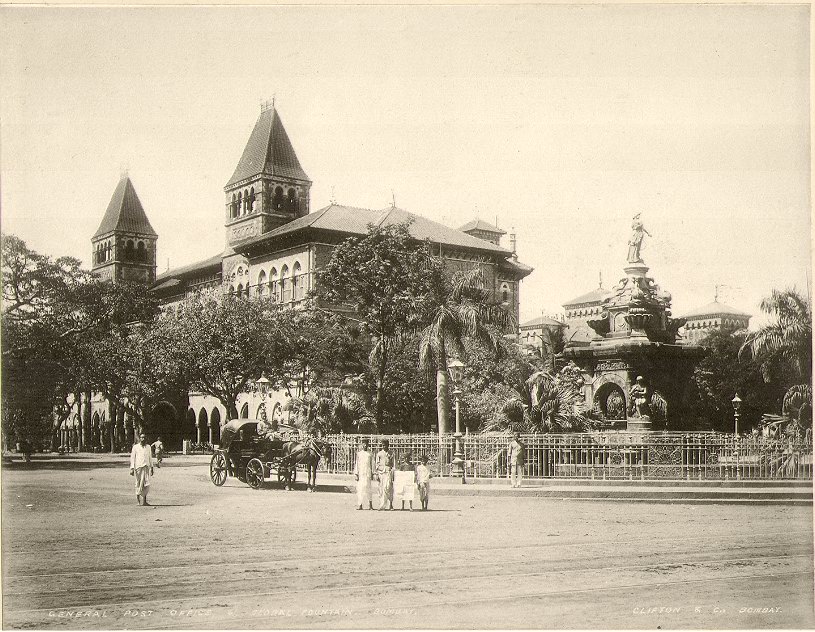
A collotype by Clifton & Co., c.1900; *an overview of the scene*
Source: ebay, Nov. 2007
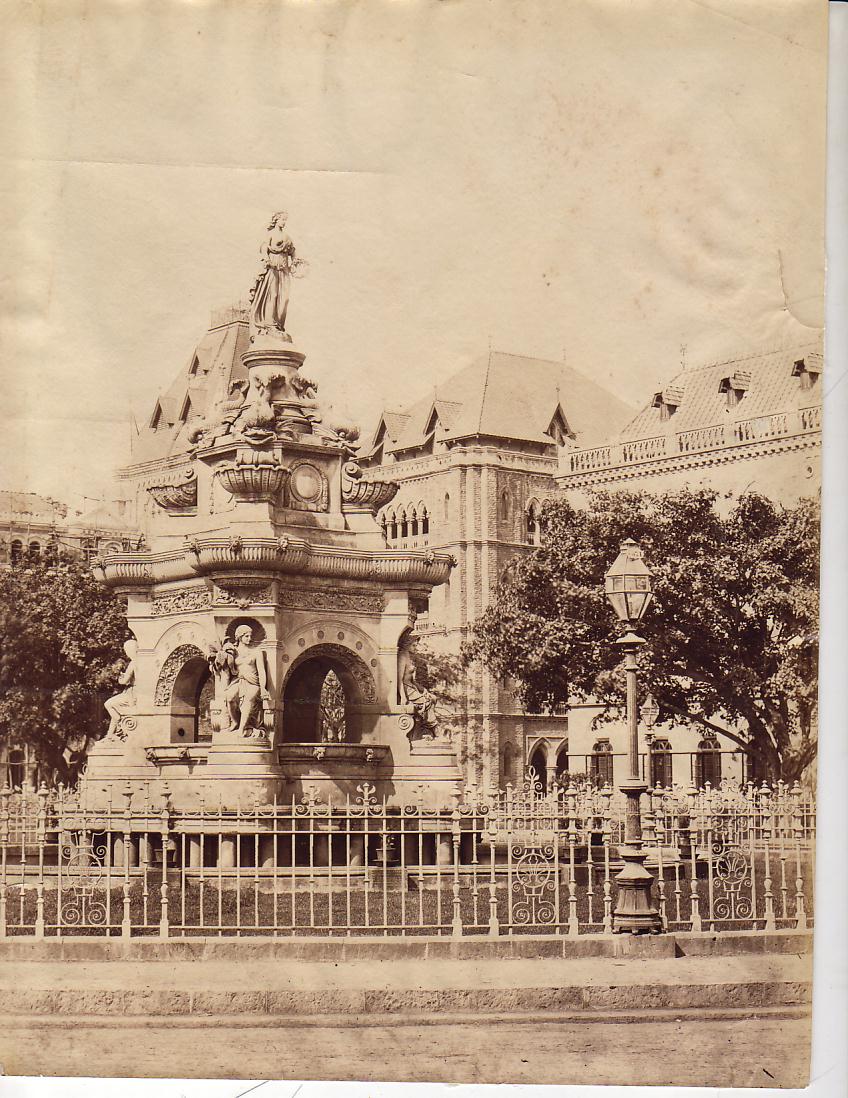
Flora Fountain, in a photo from the 1880's
Source: ebay, Mar. 2007
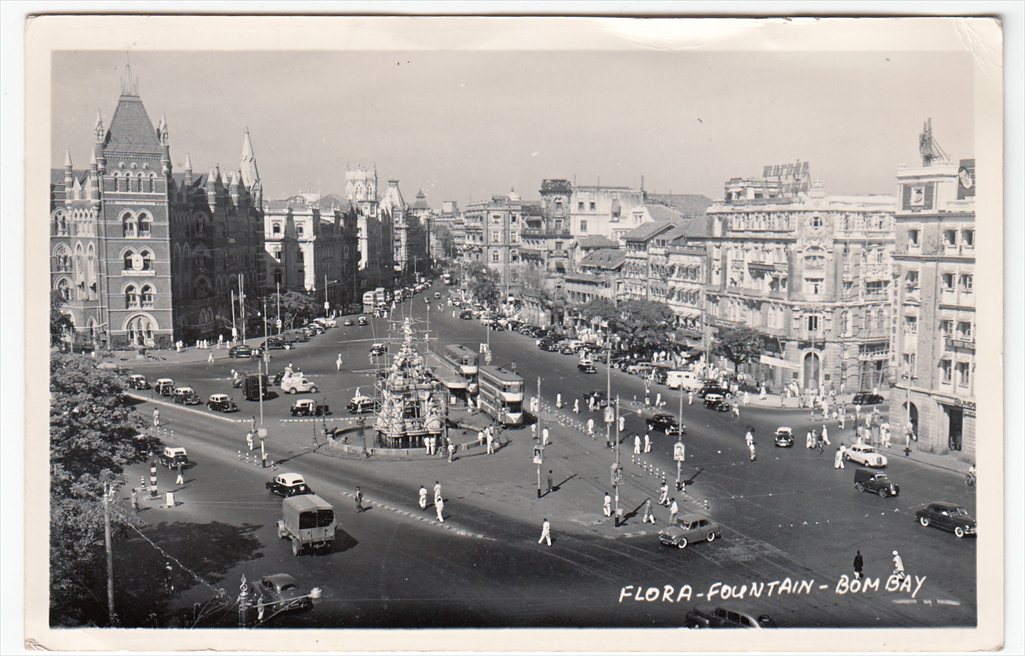
Source: ebay, Apr. 2011
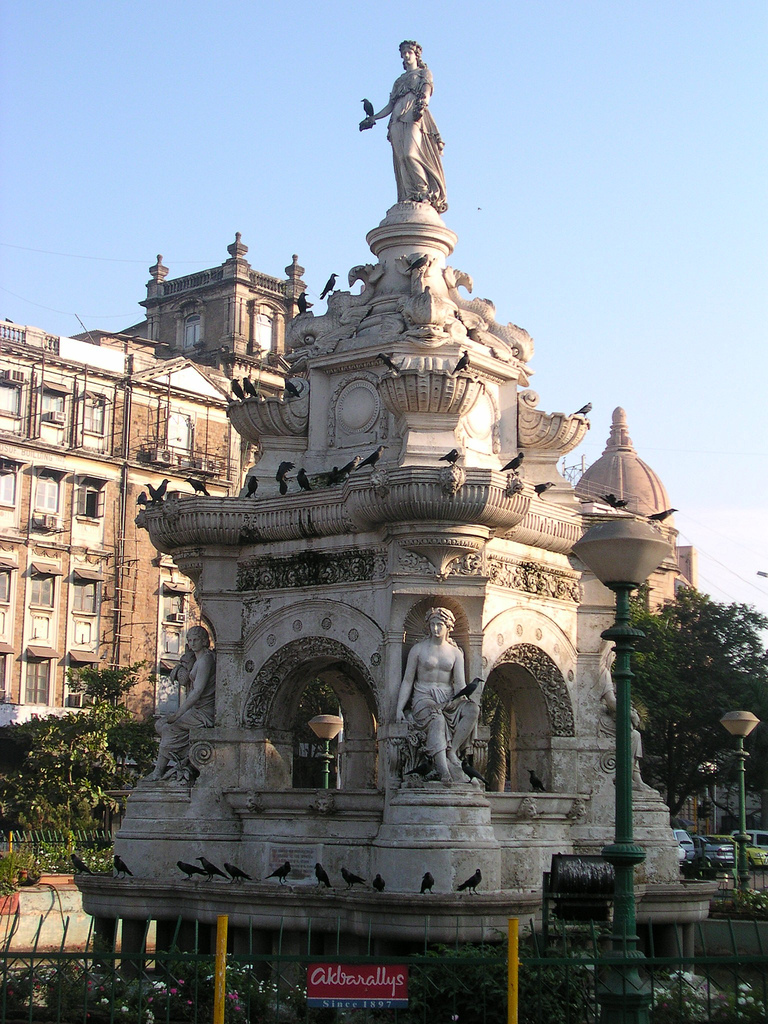
Flora is kind to the birds
Source: http://www.flickr.com/photos/mohank/163692699/
(downloaded Mar. 2007)
| TOWN HALL 1850'S PHOTO |
 |
PHOTO OF V.T.(VICTORIA TERMINUS RAILWAY STATION) NOW NAMED C.S.T (CHATRAPATI SHIVAJI TERMINUS)STATION;NO CARS -ONLY HORSE POWERED TRAMS;CARRIAGES;BULLOCK CARTS.C: 1880 |
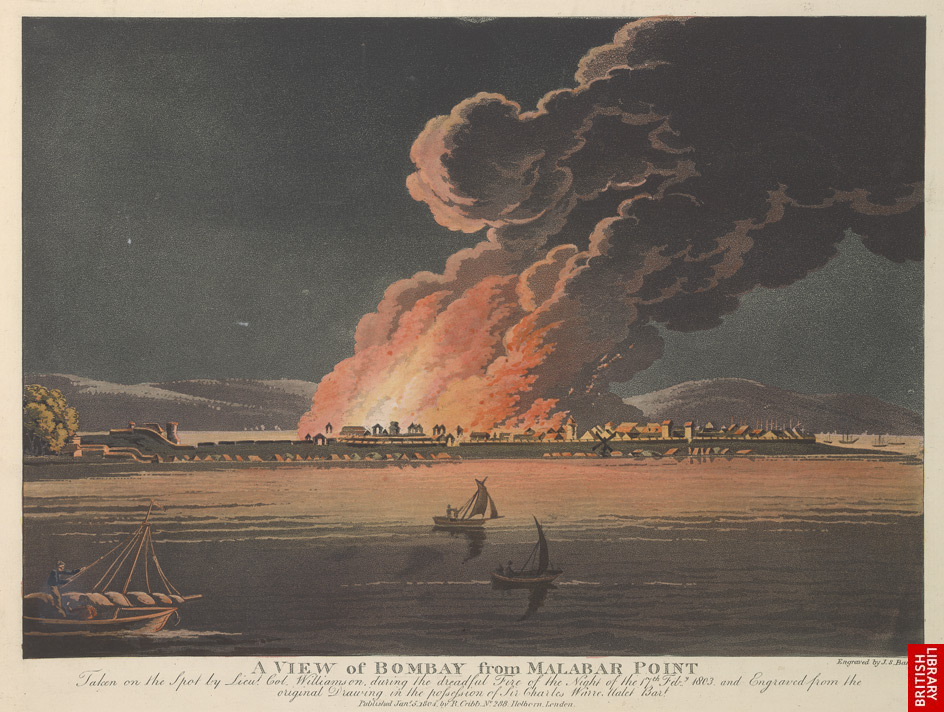
*A view of Bombay during the fire of 1803, an aquatint by J. S. Barth* (BL);
also: *The islands of Bombay and Salsette* [*Barth 1803b*]
BELOW PAINTING DOESNOT BELONG TO GETTY IMAGES -IT WAS PAINTED IN INDIA 19 TH CENTURY
IT SHOWS GOVERNOR OF BOMBAY RIDING DOWN FROM THE FORESTS OF MALABAR HILL AFTER HUNTING WILD ANIMALS
-RIDING DOWN WALKESWAR ROAD TOWARDS CHOWPATTY BEACH BOMBAY
STEAM BUSES CAN BE SEEN IN NEHRU SCIENCE MUSEUM MUMBAI

THE TILE ROOFED HOUSE ABOVE WAS ANDHERI STATION 1870'S
......................................................................................
BELOW :- PHOTO OF BANDRA -1850'S FOX HUNT
![[flora+fountain.jpg]](https://2.bp.blogspot.com/_iZMWbgTP0b4/SZ23u9AbXUI/AAAAAAAABUw/xWi8AEZJdq0/s640-rw/flora%2Bfountain.jpg)
Videos
BELOW:-"KALA GHODA"STATUE;SEEN STANDING IN FRONT OF SASSOON LIBRARY AND Elphinstone College
{Kala Ghoda (Marathi: काळा घोडा) is a precinct or district in South Mumbai, India.
The name means Black Horse, a reference to a black stone statue of King Edward VII (as the then Prince of Wales) mounted on a horse it was actually build by the famous Jewish businessman and the greatest person who contributed a lot to the city of mumbai Sir David Sassoon who owned Most of the property of this area later also a Library and a lane named after him . Although this statue was removed in 1965 to storehouses of the Bhau Daji Lad Museum (formerly the Victoria & Albert Museum (Mumbai)) in Byculla, Central Mumbai, the name persists. The statue is now in the Jijamata Udyan in Byculla.}
"The Plague in Bombay: House to House Visitation,BY DOCTOR" from the Illustrated London News, 1898 (with modern hand coloring)
BELOW -STANDING IN MIDDLE OF ROAD IS THE BOMBAY POLICE MAN

Pydownie (Mohammed Ali Road) | Old ...
Miss Cayzer; Sir Jamsetjee Manockjee Cursetjee Jejeebhoy, 4th Bt; Miss Jejeebhoy; Sir (Rustomjee Cowasjee Cursetjee) Jamsetjee Jejeebhoy, 5th Bt
History -- Early years[The first speed limits in the United Kingdom were set by a series of restrictive Locomotive Acts (in 1861,The 1865 (the 'red flag act') reduced the speed limit to 4 mph (6 km/h) in the country and 2 mph (3 km/h) in towns and required a man with a red flag or lantern to walk 60 yards (50 m) ahead of each vehicle, and warn horse riders and horse drawn traffic of the approach of a self-propelled machine;1904Under the Motor Car Act every road going vehicle had to be registered; cars and bikes had to carry front and rear registration plates
The London to Brighton Veteran Car Run 2010
 |
| SARDAR MIR ALI BAHDUR THE FIRST DETECTIVE OF POLICE OF BOMBAY IN 19TH CETURY |

Apollo Bunder

http://oldphotosbombay.blogspot.com/2011/02/old-postcards-of-bombay-mumbai.html
History-Gate way of India,1800-now
The Gateway of India, Mumbai, by George ...

The structure was erected to commemorate the landing of their Majesties King George V and Queen Mary at Apollo Bunder, when they visited India in 1911. Built in Indo-Saracenic style, the foundation stone for the Gateway of India was laid on 31 March 1911. The final design of George Wittet was sanctioned in 1914 and the construction of the monument was completed in 1924. The Gateway was later the ceremonial entrance to India for Viceroys and the new Governors of Bombay.[10] It served to allow entry and access to India

Dedication ceremony of the gateway, 1924.
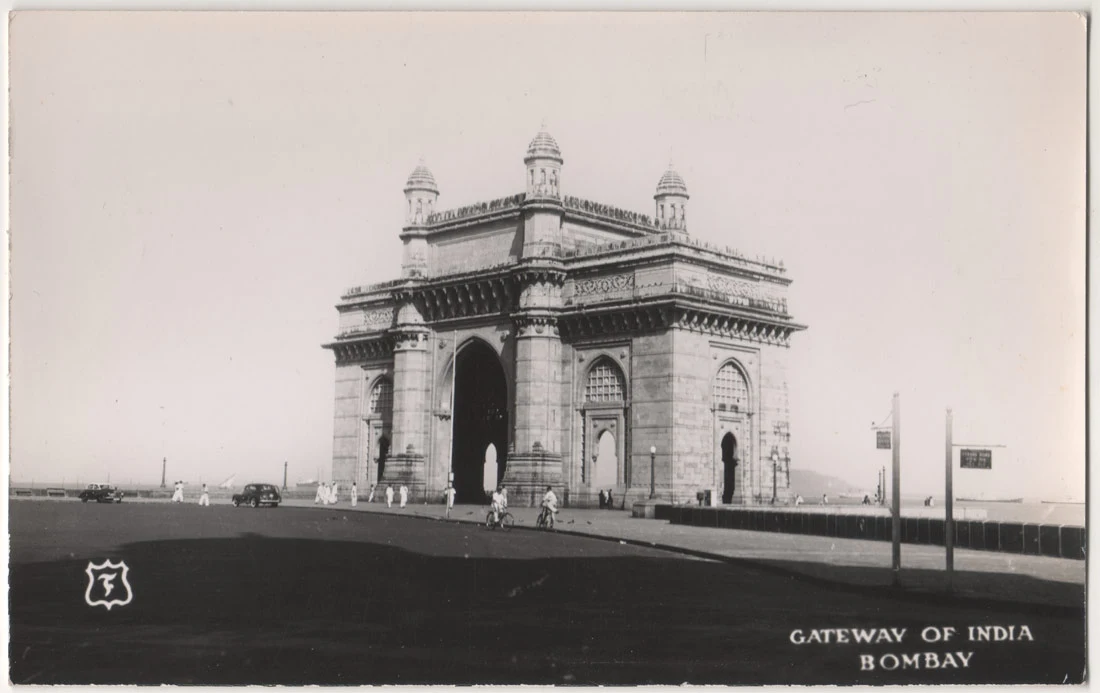
GATEWAY OF INDIA 1940'S

Rickshaw pullers playing cards 19 th century
A 1905 Humber car , photographed in Bombay-(ONE OF THE FIRST CARS IN BOMBAY)
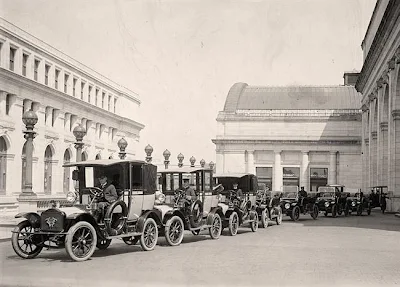
TAXIS IN NEW YORK 1914-SIMILAR 20 CARS WERE IMPORTED FOR USE AS TAXI IN INDIA ;MAINLY FOR CALCUTTA,BOMBAY
DE DION BUTON CAR-1912-cars mostly handle start;self starting cars were made from 1912 onwards
THE MAN STARTING HIS CAR ; (BY CRANKING THE STARTING HANDLE WAS THE ONLY WAY ,BEFORE SELF STARTER WAS DISCOVERED)
CARS 1920 CALCUTTA
MAHATMA GANDHI ;NEAR CAR 1930'S
below :- flora fountain 1920's

cars on the road in india- THERE WAS NO 'A' OR 'B' OR 'C' JUST THE NUMBER FOR THE CAR--SEE BELOW THE CAR REGISTRATION NO: JUST '26903'.THIS WAS WHEN NUMBER OF CARS WERE VERY FEW-PHOTO OF CALCUTTA 1930'S
 |
| ENGLISH SOLDIER'S MESS IN COLONIAL INDIA (BEFORE ELECTRICLIGHT CAME),WITH GAS LIGHT AND OVERHEAD HAND OPERATED PUNKAH(FAN) |
EQUAL TO THE SLAVE OAR PULLERS OF ANCIENT ROMAN SHIP ;WHO HAD TO ROW AND ROW FOR HOURS
THE PUNKAH BOY-PULLING THE PUNKAH-FAN
Bombay Electric Supply & Tramways Company Limited was a sole provider of electric supply, electric tram service and buses in the Mumbaicity from 1905 to till 1947 when it was municipalised to form the Bombay Electric Supply and Transport Undertaking. [BELOW PHOTO OF B.E.S.T.BUS 1920'S;AND B.E.S.T.'S SINGLE DECKER AND DOUBLE DECKER TRAMS,]
private taxi van 1930's [SEE THE BOMBAY REGISTRATION NO: B.M.B.210]
AND BUS1930'S
MARRIAGE TAXIS[OPEN HOOD CARS];HIRED ALONG WITH BAND WAS COMMON
One of the earliest emu trainsets (4-car ) speeding over the Sandhurst Road flyover
| used on the ghats in 1863 |
Bombay VT with an unidentified train in 1904
colaba station[COLABA STATION AND RAILWAY LINE IS NOW EXTINCT.LAST STATION ON THIS LINE IS CHURCH GATE]
http://oldphotosbombay.blogspot.com/2011/02/travel-by-ship-before-1960-bombay-to.htmlhttp://oldphotosbombay.blogspot.com/2011/02/travel-by-ship-before-1960-bombay-to.html
1940'S TAXI CARS
MAHATMA GANDHI ENTERING CAR -1940'S PHOTO
1940 -CHEVEROLETCARS
Guzar Gaya Woh Zamana (Pankaj Mullick)
A rare photo of all the singers together in the early years of their singing careers ! Can you spot ( front row) Zohra Jan, Rajkumari, Amirbai Karnatki, Hamida Banu, Geeta Roy (later Geeta Dutt), Lata Mangeshkar, Meena Kapoor, (and standing behind) Sailesh Mukherjee, Talat Mahmood, Dilip Dholakia, Mohd. Rafi, Shiv Dayal Batish, G.M. Durrani, Kishore Ganguli (later Kishore Kumar), and Mukesh.
Zohrabai Ambalewali or Zohrajaan Ambalewali, a very talented and popular singer of yesteryears, is best remembered now by the songs like 'Ankhiyan milage jiyaa bharmaake' and 'Aai Diwali, aai Diwali' sung under the baton of Naushad for the superhit musical film Rattan (1944). Zohrabai Ambalewali was one of the leading playback singers with Shamshad Beghum and Rajkumari till the year 1946-1947. With the arrival of younger and fresher voices like Geeta Roy and Lata Mangeshkar, Zohrabai couldn't hold her position due to their competition. She did not get to sing many songs post the years 1953-1954.
RATAN (1944)
Stars:
Swaran Lata, Karan Dewan and Amir BanuSoundtracks "Ankhiyan Milake"
Sung by Zohrabai Ambalawali
Music composed by Naushad
Lyrics by D.N. Madhok
SHEHNAI - AANA MERI JAAN SUNDAY KE SUNDAY-1947
SINGERS : CHITALKAR & MEENA KAPOOR
Awaz de kahan hai - Noor Jehan
Raat Ne Kya Kya Khwaab Dikhaaye Talat Mahmood in Ek Gaon Ki Kahani
Cast: Talat Mahmood, Mala Sinha,I S Johar, Bipin Gupta, Abhi Bhattacharya, Nirupa Roy, Lalita Pawar,
KISHORE KUMAR LIVE-MERE SAPNO KI RANI
KISHORE KUMAR LIVE-MERE SAPNO KI RANI
Geeta Dutt - Jaane Kya Tune Kahi - Pyaasa [1957]
Artist Biography
Geeta Dutt (born Geeta Roy) was one of the most influential vocalists in the history of Indian cinema. During the ten years that she was in her prime (1947-1957),
ANMOL GHADI 1946 socha tha kya kya ho gaya Suraiyya
Amirbai Karnataki&Lata-Gore Gore O Baanke Chhore -Samadhi 1950
Talat Mahmood & Shamshad Begum - Milte Hi Ankhen Dil Hua - Babul [1950]
Shamshad Begum - Chaman Mein Reh Ke Veerana - Deedar [1951]
1940-50 BOMBAY MARINE DRIVE

,+India%3B+about+1950.jpg)
1944 FORD VAN WITH WOODEN BODY
1944 FORD MILITARY TRUCK WERE CONVERTED TO CIVIL LORRIES AND WERE USED AS BREAKDOWN TRUCK IN BOMBAY TILL 2000
1945 FORD WAS VREY POPULAR AS PRIVATE CAR AND AS TAXIS TILL 1980
BELOW (THE POPULAR) FORD CAR 1948 -USED FOR WEDDINGS AND AS TAXI
BELOW:-1950'S HILLMAN TAXI OF BOMBAY[MADE IN ENGLAND]
PONTIAC CAR[MADE IN AMERICA] AS TAXI
HILLMAN MINX MADE IN BRITAIN WAS VERY POPULAR AS TAXI IN BOMBAY TILL 1970
AUSTIN A40 TAXI CAR [MADE IN ENGLAND]
THE FIRST CAR TO BE CONVERTED INTO A INDIAN CAR--MORRIS MINOR ENGLAND
WAS MADE INTO HINUSTAN CAR 1950-SEEN BELOW
MORRIS MINOR(LATER RENAMED BAY HINDUSTAN) TAXI CAR C.1950'S
Yeh Hai Bombay Meri Jaan - 1958 (Roberto Rossellini)
TAXI DRIVER (1954) HINDI MOVIE[ACTORS DEV ANAND AND KALPANA KARTIK-LATER THEY GOT MARRIED IN REAL LIFE]
BABY HINDUSTAN CAR-FIRST CAR TO BE MADE IN INDIA [COPIED FROM MORRIS MINOR ENGLAND]C.1950
ANOTHER CAR WHICH WAS CONVERTED INTO AN INDIAN CAR-MORRIS OXFORD INTO HINDUSTAN LAND MASTER
1956 FIAT MILLICENTO ALSO KNOWN AS DUKKER FIAT -USED AS TAXI IN 1960'S
BMC (BOMBAY)7921
LATER MODEL FIAT -KNOWN AS PREMIER PADMINI BELOW
1960 Tata Mercedez Benz trucks in India
TATA COLLABORATION WITH MERCEDES BENZ TRUCK 1950'S
STANDARD CARS MADE IN MADRAS (CHENNAI) CALLED HERALD / TRIUMPH; A FEW USED AS TAXIS IN

















---1873.jpg)















